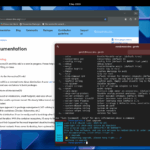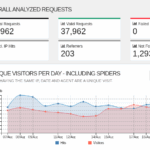Wayland is here!
Over the last year or so distributions have been busily making “Wayland” their default server display protocol, weening applications off the old X11 protocol. As with many things it’s very easy just to look the other way thinking “well it won’t affect me”, but ultimately it will. With some up and coming releases, notably Ubuntu 25.10 and Fedora 43 it’s looking increasingly likely that X11 support will be removed, which means any non-Wayland compatible applications are going to have a problem.
Do you know whether all your applications support Wayland? I know which programs I rely on use Wayland, and which ones don’t, but for the vast majority I’m not going to know until the next time I try them on a non-X11 distro. Just for example, I’ve not been able to use my favourite support tool (NoMachine) for the last year or so after upgrading my desktop to Wayland, which has meant much time wasted on messing around with lesser solutions which do work with Wayland. Either way, my exposure to Wayland hasn’t been a totally positive experience thus far and the thought of losing X11 completely is a little worrying.
What is it?
Wayland is a modern display server protocol designed to be the successor to the aging X Window System (X11) on Linux and other Unix-like operating systems.
Here’s a brief breakdown of what that means:
- Display Server Protocol: Wayland defines the communication “language” between a display server (what actually draws things on your screen) and its client applications (like your web browser, file manager, etc.).
- Replacement for X11: X11 has been around for decades and, while incredibly versatile, has accumulated a lot of legacy code and complexity. Wayland aims to be simpler, more secure, and more efficient.
- Wayland Compositor: In Wayland, the display server is called a “compositor.” Unlike X11, where the display server and window manager (which handles window placement, decorations, etc.) are separate, in Wayland, these roles are combined into a single Wayland compositor. This streamlining can lead to smoother graphics and less screen tearing.
- Direct Rendering: One of the key differences is how applications render. With Wayland, applications typically render their content directly into a buffer, which is then handed off to the compositor for display. This eliminates some of the intermediate steps and overhead found in X11.
- Improved Security: By design, Wayland is more secure. It minimizes the amount of privileged code running and aims to prevent applications from snooping on each other’s windows or inputs, which was a potential issue with X11’s architecture.
- Modern Features: Wayland is built with modern graphics hardware and features in mind, making it better suited for things like high-resolution displays, touchscreens, and various display technologies.
- Adoption: Many major Linux distributions, such as Fedora and Ubuntu, now use Wayland by default for their GNOME and KDE Plasma desktop environments. However, there’s also Xwayland, which is a compatibility layer that allows older X11 applications to run seamlessly on a Wayland system.
In essence, Wayland is a fundamental shift in how graphical interfaces are handled on Linux, aiming to provide a more performant, secure, and modern user experience.




